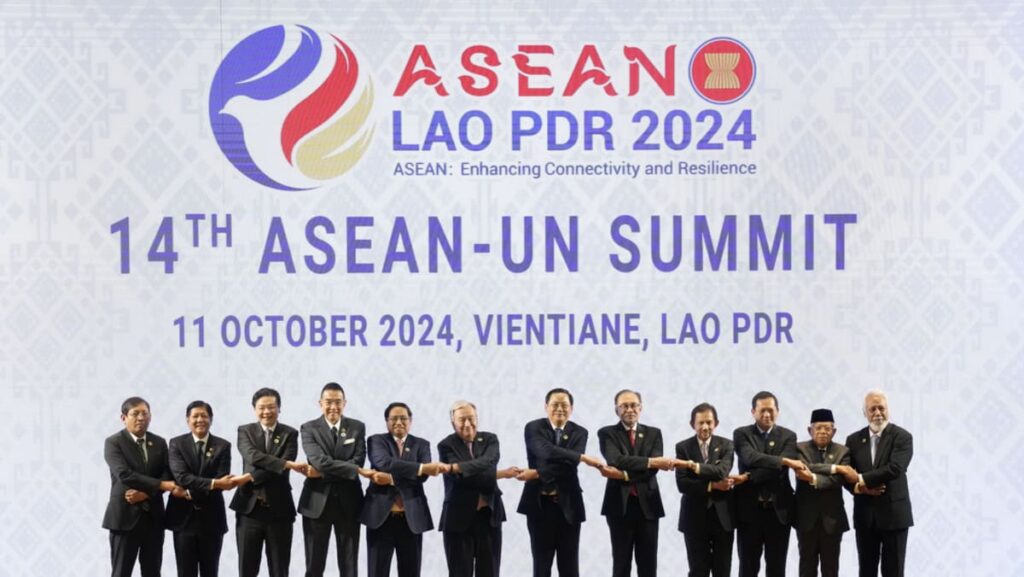CEMENTING ASEAN’S BARGAINING RESERVOIR
Whilst it is true that the GDP distance of the US and China will likely enlarge compared to the next major power, it does not mean that smaller countries have no bargaining strength. Countries like Malaysia, Brazil, Turkey, Mexico, Indonesia and Botswana are rising upper-middle-income countries with growing bargaining strength and influence.
The central idea here is to use economic strength, cemented in pragmatism and accommodation, as ASEAN’s bargaining reservoir to demand for continued neutrality and resistance against picking sides.
This approach, however, calls for a departure from a passive non-alignment stance to one that is careful, considered, and proactive neutrality. It is, therefore, opportune for ASEAN to consider deepening economic integration, both internally and externally with other blocs.
This could take a few forms, all of which are economic in nature and not seeking political integration similar to the EU model. The most significant of these is the ASEAN Power Grid, which aims to integrate the power systems of member states and which has widely-accepted benefits (decarbonisation, creating up to 9,000 jobs annually). Resolving the Laos-Thailand-Malaysia-Singapore pilot implementation snag is priority, as this would build regional-level planning abilities. With this, discussions about grid infrastructure financing will also follow, serving as a test for region-wide financing structures.
Another related substantive economic integration is regional infrastructure enhancement, such as highways and railways, that are supported by regional funding mechanisms. To truly transform ASEAN from a disparate conglomerate of diverse entities to a 650-million market, labour mobility could feature as a top economic item. This could be focused on high-skilled talents rather than a wholesale free movement, which meets the stage of development of most member states.
On top of that, ASEAN could be used as a platform for inter-regional cooperation with other large economic blocs, such as the BRICS, US, China, EU, MERCOSUR, African Union, and the Gulf Cooperation Council. This could translate to more meaningful broad-base and/or sectoral free trade agreements or action plans with investment zones, and ASEAN would serve as a prime advocate for trade in the world.
Understandably, critics may argue that ASEAN has not been an effective organisation precisely due to its non-interference approach, where member states may ignore regional pressures and proceed with business-as-usual. However, there are a few conditions that favour historical moves to integrate.
One, alignment of leaders’ interests. Major member states’ leaders are prioritising economic growth over other policies, as countries are competing to catch up or move up the value chain. Technology and renewables have also featured prominently in member states’ leaders’ agenda. As most leaders in the largest member states were appointed less than five years ago, there is also an eagerness to prove themselves through a thriving economic and investment result.
Second, trade protectionism is a worsening threat. Regional economies tend to coalesce when external environments are disorderly, let alone a trade-heavy region that has seen the advantages of an open economy like ASEAN. Such openness to regional integration may not be received as readily under peacetime.
Third, Malaysia Prime Minister Anwar Ibrahim’s legitimacy of chairmanship in 2025. Not only is Anwar’s storied political history and international diplomacy a standout, but he represents a relatable interest point, as Malaysia was the first ASEAN leader to establish relations with China in 1974 (signalling openness to trade), and has a direct stake in the South China Sea dispute. As 2025 falls at the midterm of his prime ministership, Anwar also has the opportunity to adopt a legacy-building steer by prioritising substantive integration not previously succeeded.
ASEAN’s comeback story has validated its pragmatic approach that has wider lessons in today’s world. The next decade demands greater thought and proactivity, so that ASEAN can become like the many facets of a gemstone, each splitting in different ways – but coalescing in the same light.
James Chai is a political analyst, columnist and the author of Sang Kancil (Penguin Random House).
https://www.channelnewsasia.com/commentary/us-election-asean-bloc-deeper-economic-integration-power-struggles-china-trade-economy-4732666


